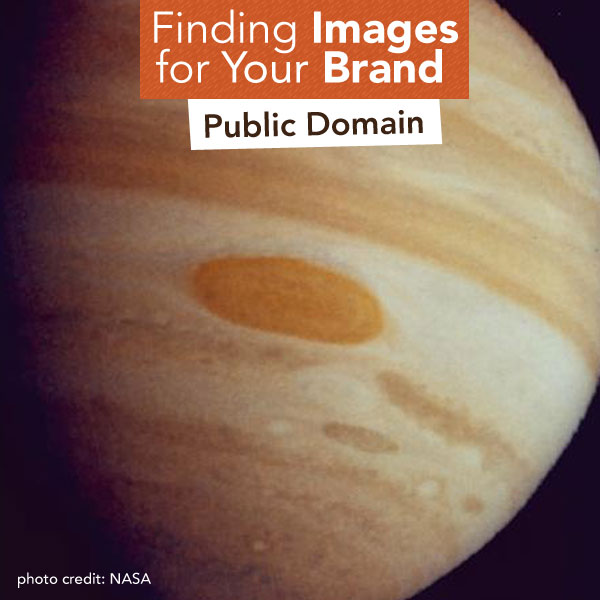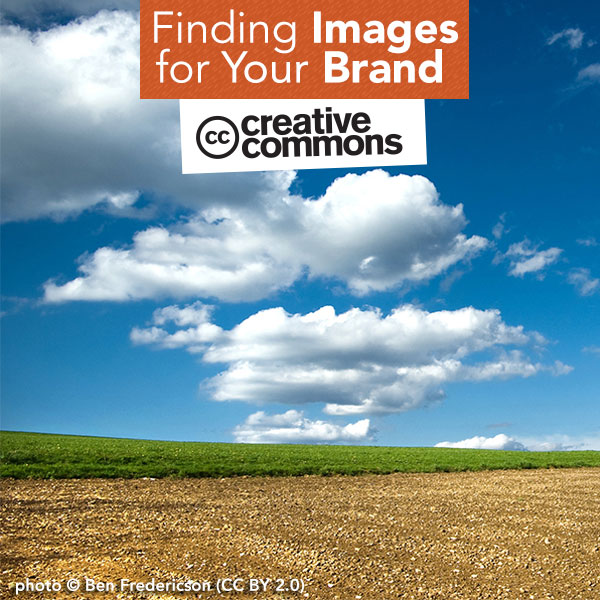Photos
Finding Images for Your Brand: Public Domain

What Does Public Domain Mean?
Public domain means that a work (photo/illustration, book, map, sheet music) is no longer protected by copyright. For the purposes of this post, we’re talking about US copyright only.
Copyright protection can be removed for a variety of reasons. The copyright may have expired because the work was published before 1923. The work may be in the public domain because whomever created it dedicated their work to the public domain. The work may be public domain because it was created by a government organization (though not all government works are public domain).
Using Public Domain Images
For the most part, you can use public domain images freely without restrictions. This means that there’s wealth of images: historical, space, nature, sports, wildlife, national parks, Civil War, NASA, World War II, and more waiting for your creative projects. You just have to find them!
Important caveats:
- Some images request photographer/creator credit.
- Some images restrict usage for commercial projects which might suggest endorsement of a product, company, or position. For example you can’t use a public domain photo of a person in an advertisement for hair gel. You’ll want to avoid public domain works that include any trademarked aspects (like a photo of a building with a trademarked logo on it).
- Some images require a fee for use in commercial projects.
- Always, always do your due diligence. Source public domain images from sites that clearly indicate the status of their images and have a clear explanation their terms of use. Check each individual image for any specific use requirements. When in doubt consult a lawyer.
Pros and Cons of Using Public Domain Images
Pros of Using Public Domain Images
- Access to awesome historical images.
- Free or low cost.
- Few restrictions on usage.
Cons of Using Public Domain Images
- It can take a lot of time to find the photo you need.
- It can be hard to determine if the image is actually public domain.
- Image quality and resolution may be poor.
3 Resources to Start Your Public Domain Searches
Public Domain Sherpa: Links to many, many public domain resources, plus in-depth explanations of public domain and checklists to help you determine if the work you’re considering is in fact public domain. Consult this source for the best information on this topic!
Gimp Savvy’s Photo Archive: Makes searching public domain images from the National Aeronautics and Space Administration (NASA), the National Oceanic and Atmospheric Administration (NOAA), and the U.S. Fish and Wildlife Service easier.
Wikipedia: Public domain image resources: Huge list of public domain resources.
Choosing just the right photos and illustrations can play a huge role in how your brand feels to your ideal clients, and how you feel about your brand.
Read more of the Finding Images for Your Brand series here: 12 Stock Photography Sites, 5 Free for Commercial Use Stock Image Sites, Creative Commons Images. In a future post I’ll provided resources for illustration/icon sites.
Then, I’ll circle back and talk about how to select the best types and styles of images for your brand. If you need help figuring out what images would best fit your brand there’s a step-by-step discovery process in the Online Branding Basics course which is included in all subscriptions to Jewels Branch.
Want more DIY design resources like these delivered to your inbox? Sign up for the Jewels Branch newsletter!
Finding Images for Your Brand: Creative Commons

Creative Commons (CC) Licensed Images
Let’s take a closer look at how you can use free Creative Commons licensed images in your brand’s creative projects.
Creative Commons allows artists and photographers to choose how to license their work for public use. There are many variations of the CC license: from Attribution (which allows you to use their work for just about anything, as long as you give them credit) to Attribution-NonCommercial-NoDerivs CC BY-NC-ND (which allows you to share their work, but not alter it or use it commercially, so you can’t use it in your business branding) and many more licenses in between.
You can read all about the different license types here:
http://creativecommons.org/licenses/
!!!! When you find a CC photo or image that you want to use always check to verify that it is in fact CC licensed. It should clearly say which license it grants. Then, you can follow the rules of that particular license. Pay close attention to attribution requirements and commercial vs. non-commercial use limitations. If your design is being created for your business blog it is a commercial project.
Pros and Cons of Using Creative Commons Images
Pros of using Creative Commons Images
1) Free.
2) Lots of variety of images.
Cons of using Creative Commons Images
1) License restrictions can be prohibitive for commercial use.
2) Limited resolution and size.
3) Adding attributions adds clutter to designs.
Search for Creative Commons images here:
Creative Commons
Flickr
Compfight (Has a WordPress plugin to make it easier to use images on your blog, too!)
Photo Pin
Pixel Perfect Digital free stock photos that are CC licensed
Choosing just the right photos and illustrations can play a huge role in how your brand feels to your ideal clients, and how you feel about your brand.
Last week I shared some resources for finding stock photos and illustrations. In future posts I’ll provided resources for free for commercial use sites, public domain images, and free illustration/icon sites.
Then, I’ll circle back and talk about how to select the best types and styles of images for your brand. If you need help figuring out what images would best fit your brand there’s a step-by-step discovery process in the Online Branding Basics course which is included in all subscriptions to Jewels Branch.
Want more DIY design resources like these delivered to your inbox? Sign up for the Jewels Branch newsletter!
Finding Images for Your Brand: 12 Stock Photography Sites

Images from istockphoto
Feeling Good About Your Brand Images
Working with images in all their forms (photos, illustrations, symbols) is one of the most enjoyable parts of building a visual brand. Who couldn’t spend all day looking at beautiful photos of beach sunsets, smiling babies, and ice cream cones?
Choosing just the right photos and illustrations can play a huge role in how your brand feels to your ideal clients, and how you feel about your brand.
Over the next couple of weeks I’ll be sharing some resources for finding photos and illustrations for your brand. We’ll look at: paid stock photography sites, creative commons licensed images, free for commercial use sites, public domain images, and free illustration/icon sites.
Then, I’ll circle back and talk about how to select the best types and styles of images for your brand. If you need help figuring out what images would best fit your brand there’s a step-by-step discovery process included in Online Branding Basics.
Paid Stock Photography Sites
Let’s start by looking at stock photography sites where you can purchase images.
Stock photo websites compile a huge inventory of photos and illustrations (and video clips) in a wide variety of styles. You can purchase rights to use those photos, illustrations, and videos in your marketing and branding materials.
Understanding Licensing
There are two main types of stock photos licenses you can purchase: royalty free and rights managed.
Royalty free images: you pay once to use the image.
Rights managed images: you pay per view or use (for example if you want to use an image on a t-shirt to sell you have to pay more).
Always check the individual licensing agreements for each stock photo service before you purchase! Each stock site has different terms of use.
Pricing and Cost Considerations
All stock photo services also have different purchasing processes and prices. Some sites offer package pricing, others offer monthly/yearly subscriptions, and others allow you to purchase images one-at-a-time.
When you’re deciding where to purchase images, you’ll want to consider your budget, the number of images you need, whether you need high resolution images (for print projects), and whether the site’s image style matches your branding.
Pros and Cons of Using Stock Images
Pros of using stock images
1) Professional looking images at lower cost than hiring a professional photographer.
2) Easy to search and find images.
3) Lots of variety of images.
4) Good quality images, available in high resolution.
Cons of using stock images
1) License restrictions can be prohibitive.
2) You’ll see the same images used by other brands.
3) Some stock photos have a certain look that says “stock” perfect smiling faces, for example.
12 Stock Sites to Explore
Shutterstock
Dreamstime
Fotolia
iStockphoto
Bigstockphoto
123RF
Can Stock Photo
Getty Images
Alamy
Veer
Corbis Images
PunchStock
Search Tip: When you’re looking for the perfect image search more than one stock site to find a better selection.